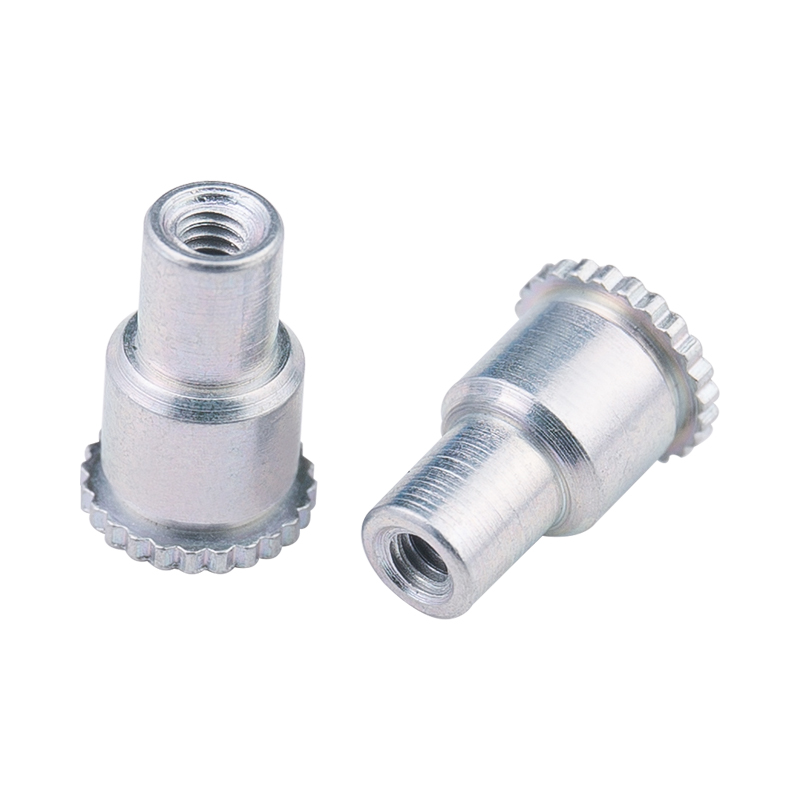-
CBB61 1.2uF/400V Black Film CapacitorsThe CBB61 1.2uF/400V capacitor features a black casing with black dielectric material, measuring 37mm × 24mm × 13mm. It includes mounting holes for se...
-
CBB61 1.5uF/400V CapacitorsThe CBB61 1.5uF/400V capacitor shares the 37mm × 24mm × 13mm black casing and black dielectric material with its 2.0uF counterpart. It also features m...
-
CBB61 2.0uF/400V CapacitorsThe CBB61 2.0uF/400V capacitor comes in a black casing with a black dielectric material, measuring 37mm × 24mm × 13mm. It includes mounting holes for ...
-
CL21 155/400V CapacitorsThe CL21 155/400V capacitor measures 22.5mm × 17.5mm × 10.3mm and is designed with a brown encapsulated casing, offering robust insulation and environ...
-
CL21 105/630V CapacitorsThe CL21 105/630V capacitor has dimensions of 22mm × 12.5mm × 7mm and features a brown encapsulated design, providing enhanced insulation and mechanic...
-
X2-104uf/305V CapacitorsThe X2-104uF/305V capacitor measures 18mm × 12mm × 11mm and features a yellow shell and yellow dielectric material, ensuring reliable insulation and l...
Are Riveting Locating Nuts the Optimal Fastening Solution for Precision Industrial Assembly?
Industry News-In the pursuit of efficiency, accuracy, and structural integrity in modern manufacturing, engineers are continuously evaluating fastening technologies that offer superior performance with minimal complexity. Among the array of available solutions, riveting locating nuts have emerged as a compelling alternative to traditional welding, tapping, and threaded insert methods.
But are they truly the best choice for every application?
These nuts typically feature:
A threaded bore compatible with standard screws or bolts
A flanged or serrated base to prevent rotation
A deformable shank that expands during installation to create a mechanical lock
They are commonly used in sheet metal, aluminum panels, and composite materials across industries such as automotive, aerospace, rail transport, and electronics enclosure manufacturing .
Why Consider Riveting Locating Nuts?
The appeal of riveting locating nuts lies in their ability to combine several critical advantages into a single fastening operation:
1. Single-Sided Installation
Unlike welding or nut plates, these fasteners can be installed from one side, eliminating the need for dual-sided tooling or heat-based processes.
2. No Heat Distortion
Since installation is cold-formed, there is no risk of warping thin panels or compromising paint finishes—a major benefit in automotive and architectural applications.
3. High Shear and Pull-Out Resistance
When properly installed, these nuts provide strong load-bearing capabilities, often surpassing those of spot-welded alternatives.
4. Improved Repeatability
Automated systems can easily integrate riveting tools, ensuring consistent quality and reducing operator dependency.
5. Compatibility with Lightweight Materials
With the increasing use of aluminum and fiber-reinforced composites in transportation and aerospace, these fasteners offer a non-invasive way to secure components without weakening the host material.

In Which Applications Do They Excel?
While riveting locating nuts offer numerous benefits, their suitability depends heavily on the specific requirements of the application. Here’s how they perform in key sectors:
Automotive Manufacturing
Used for attaching brackets, hinges, sensors, and trim components
Preferred over weld nuts in pre-painted panels to avoid surface damage
Facilitates modular assembly lines where rework and flexibility are essential
Aerospace Structures
Ideal for securing interior components and avionics without adding unnecessary weight
Allows for disassembly and rework without damaging composite panels
Railcar Production
Applied in carriage interiors and underframe equipment mounting
Offers corrosion-resistant options for long-term durability in outdoor environments
Electronics and Enclosures
Provides grounding points and hardware attachment without compromising enclosure sealing
Supports rapid prototyping and low-volume production runs
How Do They Compare to Alternatives?
To determine whether riveting locating nuts are the best option, it's important to compare them against other common fastening methods:
|
FASTENING METHOD
|
ADVANTAGES
|
LIMITATIONS
|
COMPARISON TO RIVETING LOCATING NUTS
|
|---|---|---|---|
|
Weld Nuts
|
High strength, permanent bond
|
Requires skilled labor, causes distortion
|
No heat involved; safer and cleaner
|
|
Threaded Inserts
|
Reusable, high torque retention
|
Requires tapped holes
|
Faster installation, no tapping needed
|
|
Self-Clinching Nuts
|
Strong, reusable
|
May require high insertion force
|
Similar performance but better alignment
|
|
Adhesive Bonding
|
Aesthetic finish, lightweight
|
Long cure time, environmental sensitivity
|
More robust mechanical connection
|
Challenges and Considerations
Despite their advantages, there are scenarios where riveting locating nuts may not be the best fit:
Material Thickness : They require a minimum panel thickness to allow proper shank expansion.
Installation Equipment : Specialized tools or presses are necessary, which can represent an initial investment.
Design Constraints : The placement must allow for precise hole punching or drilling to ensure correct alignment.
Cost Factors : Depending on material and coating, they may be more expensive than simpler fasteners.
Additionally, improper installation—such as incorrect hole size or insufficient pressing force—can lead to reduced load capacity or premature failure.



 русский
русский Español
Español